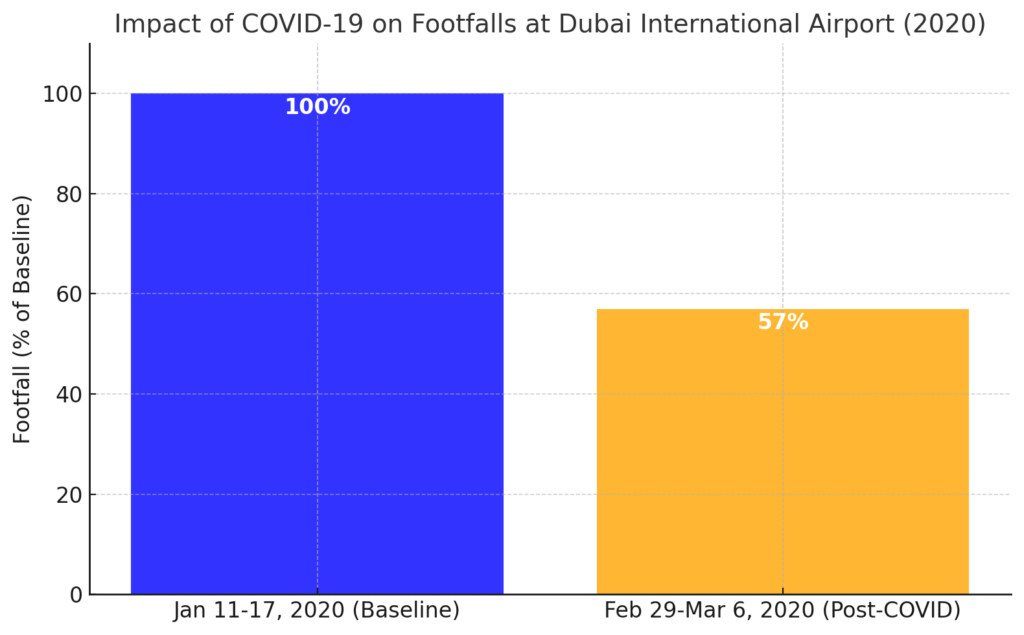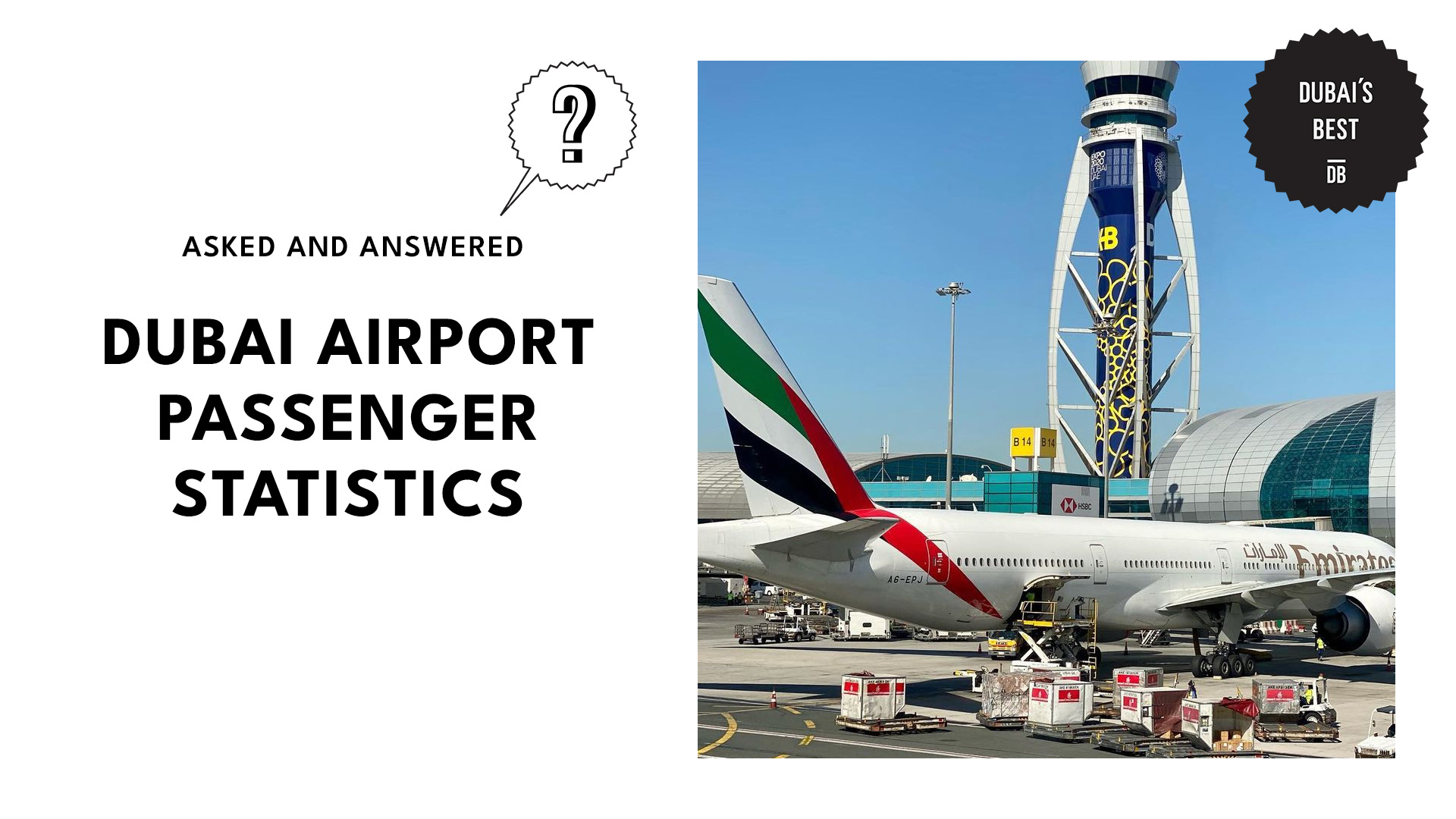Exploring Dubai Airport Passenger Statistics: Key Numbers and Insights
Key Insights
• The Official Airline Guide says Dubai is one of the top 10 busiest international routes in 2024.
• Taking into account international flights alone, Dubai maintains its position in the lead with 5.3 million passengers, followed by London Heathrow (4 million), Singapore Changi (3.8 million), and Seoul Incheon (3.7 million).
• The airport had 68.6 million passengers in the first 9 months of 2024, a 6.3% increase on the same period last year.
Dubai International Airport (DXB) is among the busiest airports in the world for international passenger traffic. It’s one of the world’s leading aviation hubs and is a crucial gateway between East and West.
In 2024, Dubai had 5.3 million passengers, followed by Atlanta Hartsfield-Jackson with 5.2 million passengers, Tokyo Haneda with 4 million passengers, and London Heathrow with 4.3 million passengers.
Here’s how Dubai fares in terms of being the busiest airport in 2024:
Dubai Airport’s Key Passenger Statistics
Dubai International Airport handled 68.6 million passengers in the first 3 quarters of 2024, a 6.3% year-on-year increase.
To help you gauge the airport’s year-on-year growth or decline in its passengers, here’s a simplified graph:

This chart shows passenger traffic at Dubai International Airport (DXB) from 2010 to 2024 (forecasted from the latest data available).
There’s steady growth in passenger numbers from 2010 to 2019, peaking before the pandemic, but there’s a steep drop in 2020 during the fact. Rapid recovery occurred in the next year and continued positively in the following years.
The strong Q4 performance here is driven by Dubai’s thriving tourism sector, direct traffic growth, and population increases.
Dubai Airport’s Passenger Demographics and Travel Patterns
Dubai International Airport is a global hub for diverse passengers, reflecting the city’s role as a major travel and tourism destination.
Dubai also demonstrates readiness to cater to increasing travel demand in the UAE’s key markets worldwide. Here’s a closer look at the passenger traffic by country and city with the top routes at DXB:
| Country | Passengers (millions) | City | Passengers (millions) |
| India | 3.1 | London | 0.96 |
| Saudi Arabia | 2.0 | Riyadh | 0.8 |
| UK | 1.5 | Jeddah | 0.7 |
| Pakistan | 1.1 | Mumbai | 0.6 |
| US | 0.8 | ||
| Russia | 0.7 | ||
| Germany | 0.7 |
Travelers from India dominate the traffic, followed by Saudi Arabia, and the UK. These countries consistently contribute to DXB’s high passenger numbers, driven by strong business, tourism, and personal travel connections.
Peak travel times at DXB also typically coincide with holiday seasons, such as summer vacations, winter holidays, and major festivals like Eid and Christmas.
Impact of COVID-19 on Dubai Airport Traffic
The pandemic negatively affected passenger numbers and how DXB has recovered. The chart below visualizes this fact:

This chart illustrates that the footfall at the Dubai International Airport decreased by an average of 43%.
This was based on the analysis of the weekly average footfalls from January 11 to 17 (pre-COVID-19 period) with those observed between February 29 and March 6 (post-COVID-19 period).
Note that Jan 11th to 17th was selected as the baseline footfall (as shown in the chart) to have minimal interference from the holiday tourists near the start of the year.
Dubai Airport’s Sustainability and Future Growth
Dubai International Airport (DXB) commits to sustainability and future growth through various initiatives that reduce carbon emissions, conserve resources, and use new technologies.
For one, Dubai’s “Follow the Greens” system further enhances sustainability by optimizing aircraft taxing and lowering fuel consumption and emissions.
In addition, Airports Council International (ACI)’s Airport Carbon Accreditation (ACA) program is the only global carbon management standard for airports. This guides them in tracking and reducing their carbon footprint toward net zero by 2050.
With all these plans for future growth, the airport plans to increase its yearly capacity to 90 million passengers.
Dubai Airport’s Economic Contribution
Dubai International Airport (DXB) is a cornerstone of Dubai’s economy, serving as a global gateway for trade, tourism, and business. Its impact extends beyond aviation, influencing multiple sectors locally and internationally.
For example, the aviation sector supported 27% of Dubai’s GDP in 2023, with an economic contribution of AED 137 billion (USD 37.3 billion).
DXB also provides over 90,000 jobs directly at the airport, involving operations, retail, and hospitality positions.
When considering indirect employment through related industries like tourism, transport, and logistics, the number goes up to more than 400,000 jobs, showcasing its role as a major employment driver.
References
- Airports, D. (2024, November 19). DXB on track to break records in 2024 after stellar nine months. DXB on Track to Break Records in 2024 After Stellar Nine Months. https://media.dubaiairports.ae/dxb-on-track-to-break-records-in-2024-after-stellar-nine-months
- Dubai Airports / Corporate home page. (n.d.). https://dubaiairports.ae/corporate/our-story/sustainability
- Dubai, Atlanta, Tokyo top 2024 international passenger traffic. (n.d.). https://www.aa.com.tr/en/world/dubai-atlanta-tokyo-top-2024-international-passenger-traffic/3446847
- Dubai International Airport: a gateway to the world. (n.d.). https://harperwellington.com/blog/dubai-international-airport-a-gateway-to-the-world
- Dubai International Airport (DXB) Records its Busiest Quarter in History | Public Debt Management Office. (n.d.). https://dmo.dof.gov.ae/en/news-and-publications/latest-press-releases/dubai-international-airport-dxb-records-its-busiest-quarter-in-history/
- Dubai International Airport November 2024 | Emirates NBD Research. (n.d.). Emirates NBD Research. https://www.emiratesnbdresearch.com/en/articles/dubai-international-airport-november-2024
- Dubai world’s busiest international airport. (n.d.). www.breakingnewsenglish.com. https://breakingnewsenglish.com/1602/160204-dubai-airport-m.html
- Emirates. (2024, October 25). Aviation’s contribution to Dubai economy revealed in report. Aviation’s Contribution to Dubai Economy Revealed in Report. https://www.emirates.com/media-centre/aviations-substantial-contribution-to-dubais-economy-revealed-in-latest-report/
- Factori Editorial. (2024, December 31). Impact of COVID-19: Dubai International Airport footfalls – Factori. Factori. https://www.factori.ai/blog/impact-of-covid-19-international-airport-footfalls-in-dubai/
- Statista. (2024, June 27). Total passengers at Dubai International Airport UAE 2013-2023. https://www.statista.com/statistics/641255/dubai-total-passengers-at-dubai-international-airport/

